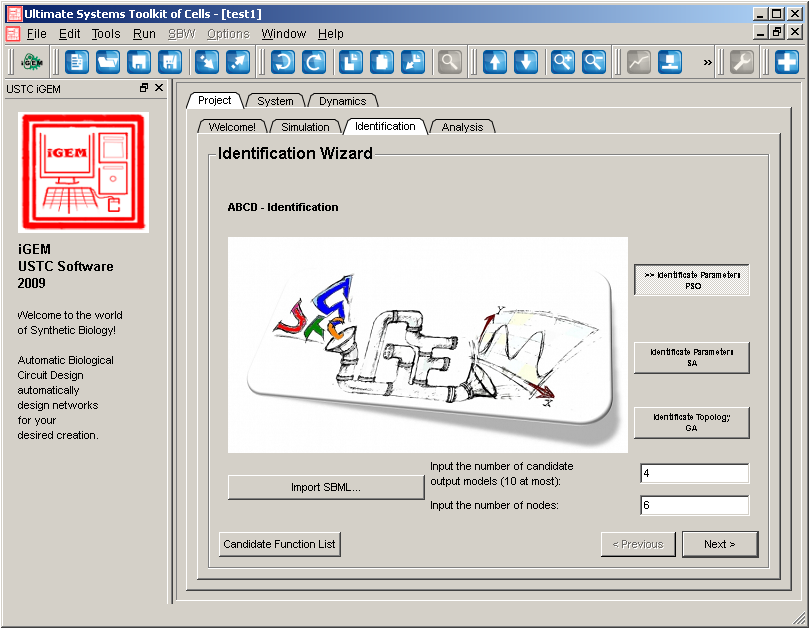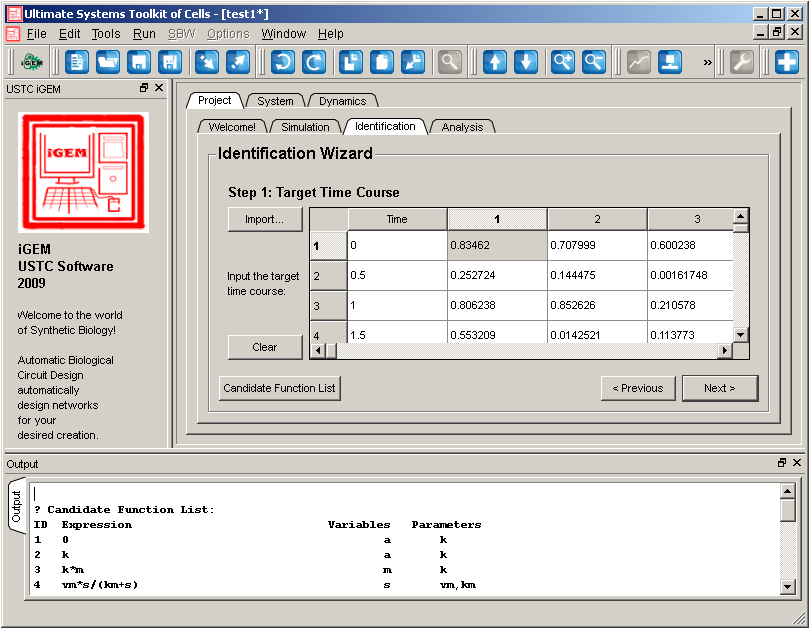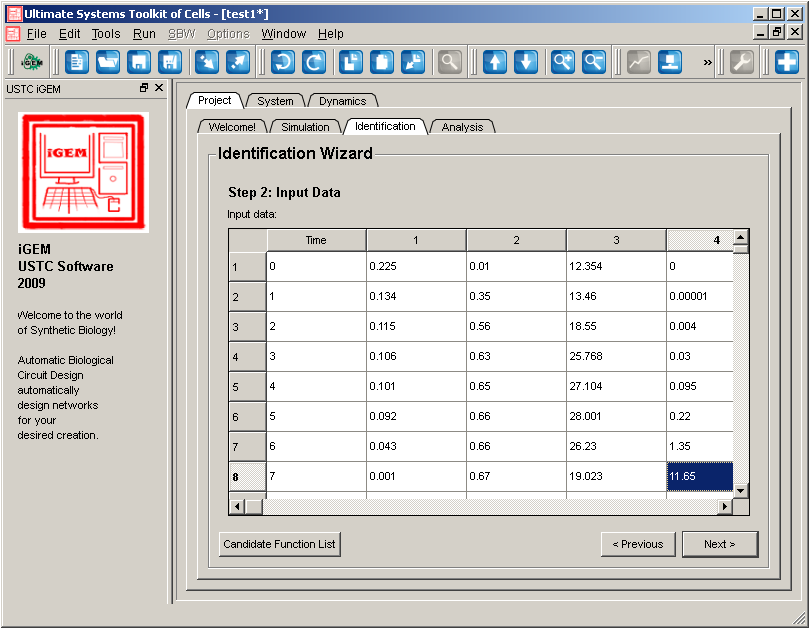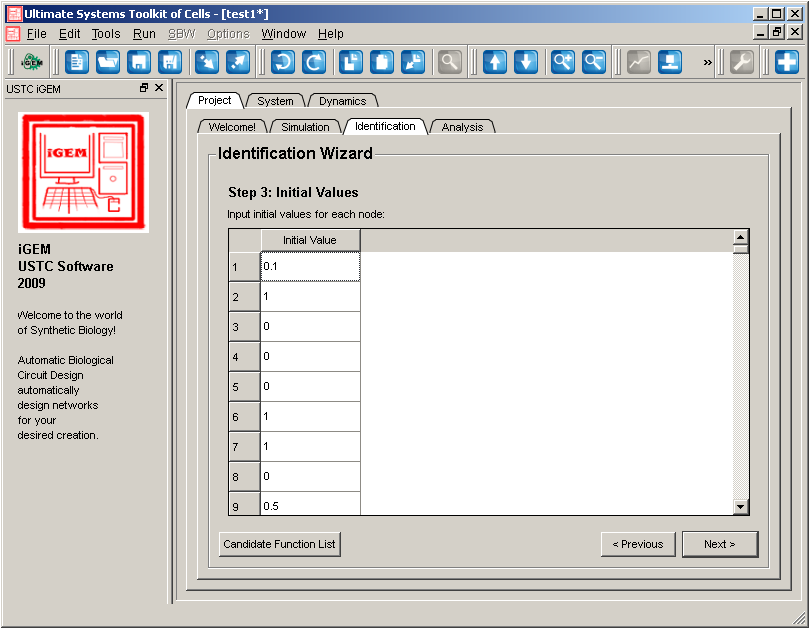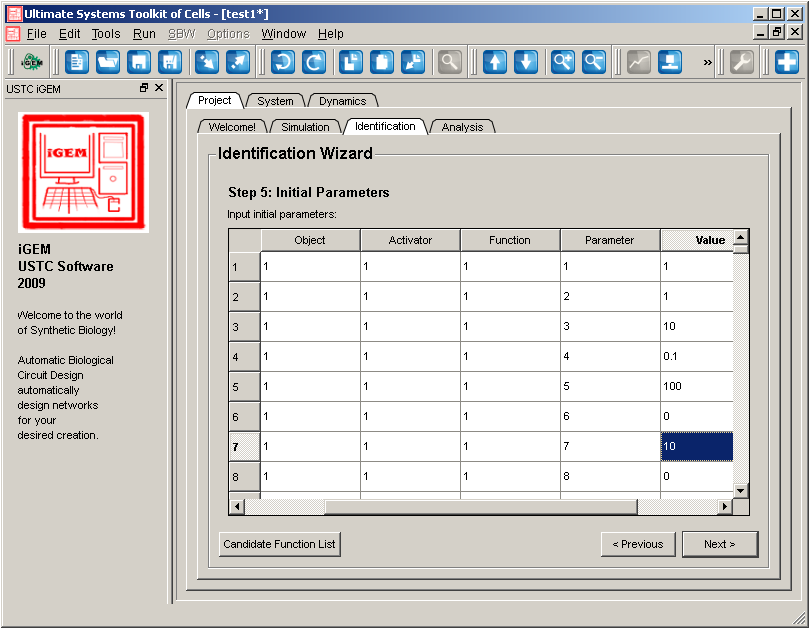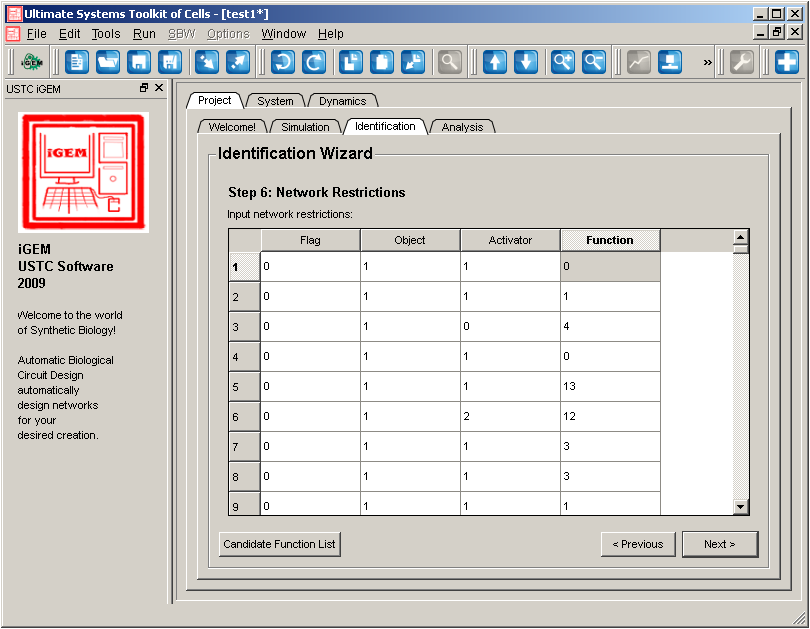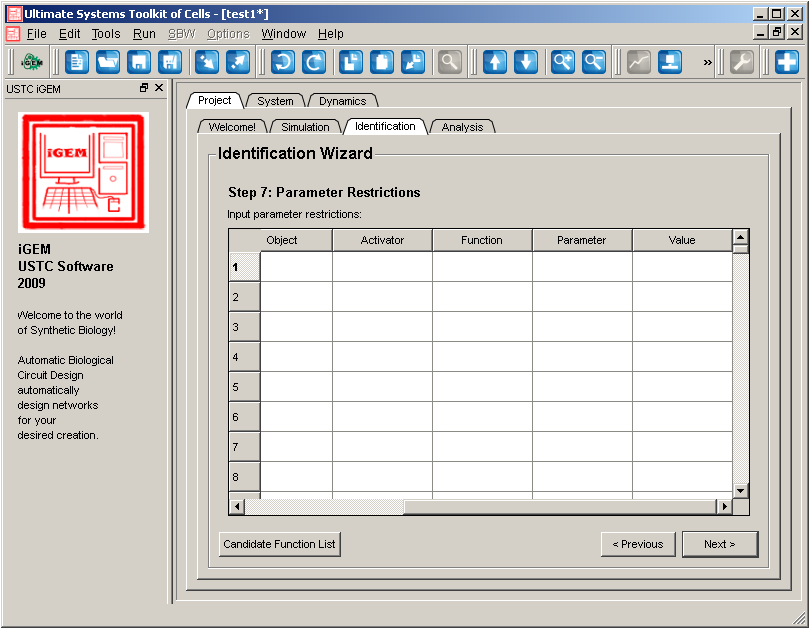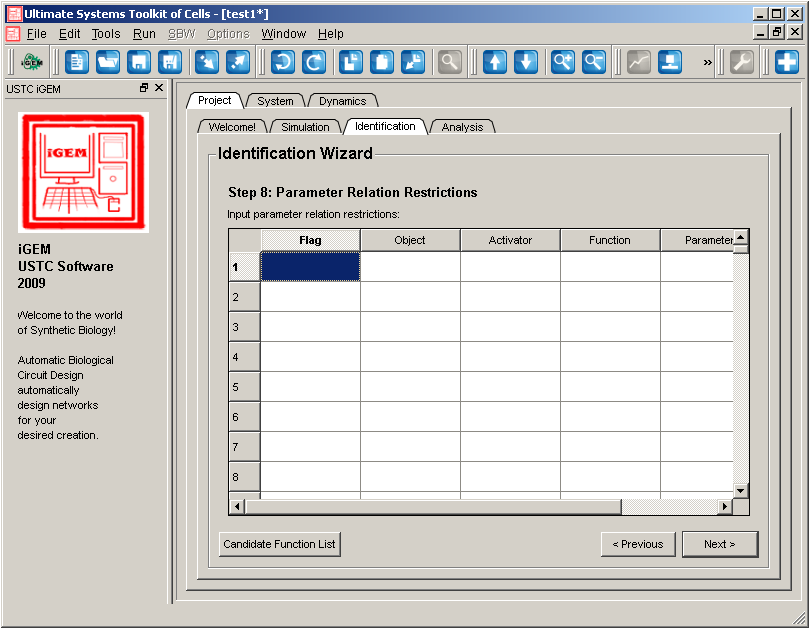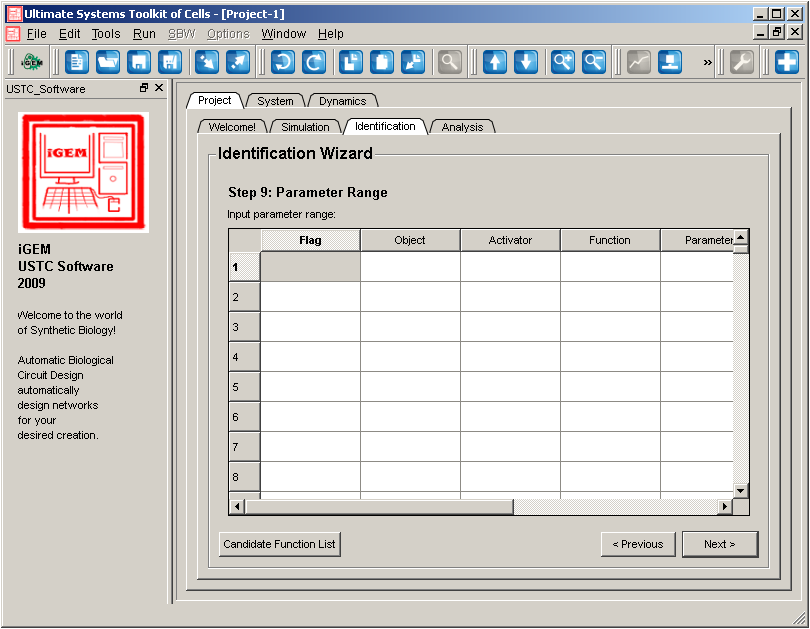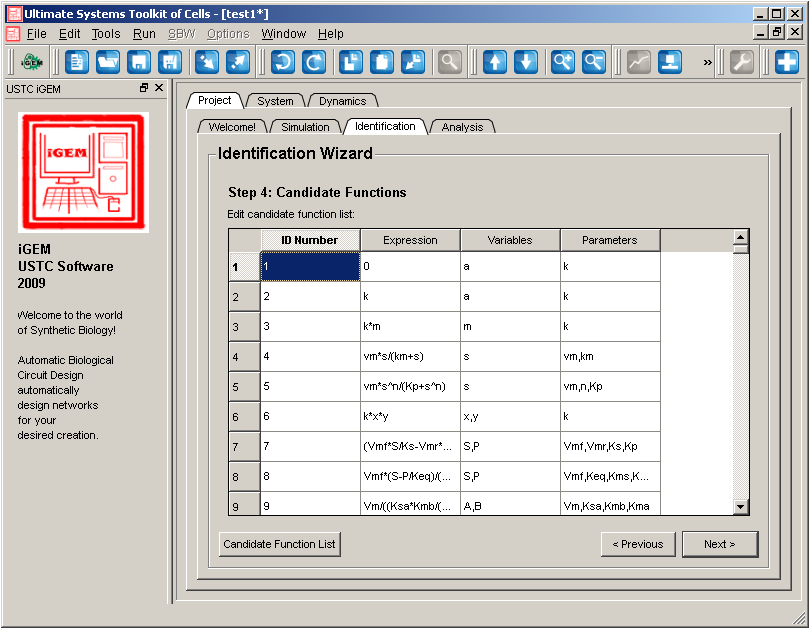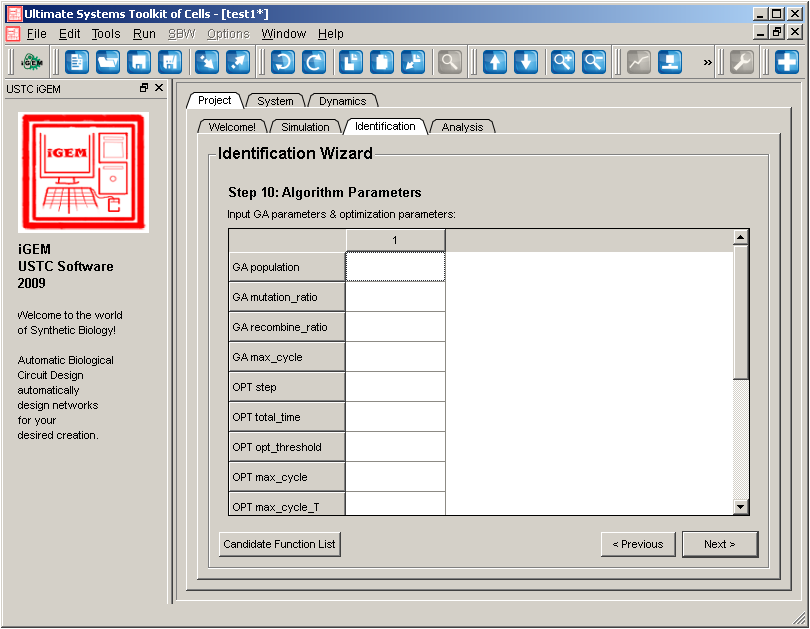|
|
Restrictions - Input File List
|
No
|
Item
|
Instructions
|
| 1.
| Node
|
|
| 2.
| Target Time Course
|
|
| 3.
| Input Data
|
|
| 4.
| Initial Values
|
|
| 5.
| Initial Parameters
|
|
| 6.
| Network Restriction
|
|
| 7.
| Parameter Restriction
|
|
| 8.
|
Parameter Relation Restriction
|
|
| 9.
| Parameter Range
|
|
| 10.
| Candidate Function List
|
|
| 11.
| Algorithm Parameters
|
|
- Node: Lets you specify the numbers of species you need to construct a network
- Target Time Course: Target time course represent the desired behavior of a system if you choose the function of "identification". While in the case of "simulation" or "sensitivity analysis", the target file determine the time course used in the simulation process
- Input Data: Lets you input desired dynamics of one or more species as time course. Note that you must assign which species an input is act on in the first line of this file. If an input is act on more than one species(exist in more than one ODE), you should repeat it for each species it acts on.
- Initial Values: Lets you specify the initial value of species, this file must exist unless you choose to import your model with SBML file.
- Initial Parameters: Lets you specify the initial value of a parameter. There are six columns in this file: (1) flag (2) object (3)activator (4)function (5)para_index (6)value. Every line in this file represent only ONE parameter, the first five columns is used to locate a term in the ODEs and to locate a parameter in a term while the last column gives the value of a parameter. If you want to carry out simulation or sensitivity analysis, each paramter must be initialized in this file.
- Flag indicate the number of species involved in a term if it is a positive value and "-1" represent degradation term, "-2" represent constant term.
- Object indicate which species this term affect, or which ODE this term in.
- Activator indicate index of species involved in a term, the number of activators must in accordance with flag tag.
- Function indicate the type of reaction of this term.
- Para_index_value indicate the index of parameter in current reaction, since more than one parameters may exist in a reaction.
- The last column indicate the value of a parameter.
- Network Restriction: If you want to carry out topological identification, this file lets you cut unnecessary edges between species and restrict special rate term form of ceritain species. For other cases, this file also plays the role to input a certain topological structure. Compared to Initial Parameters File, there are two less columns in this file. The first three columns "flag", "object", "activator" are used to specify an edge in the network while the last column "func_list" determine type of the edge.
- Parameter Restriction: Lets you specify a parameter value that holds at all times during the identification. The organization of this file is absolutely the same with Initial Parameters File. This file is not needed unless you want to do identification.
- Parameter Relation Restriction: Lets you specify mathematical constraints on one or more parameters, species, or compartments that must hold during a simulation
- Parameter Range: Lets you specify the feasible range of parameters regardless of "7. PARAM_RESTRI". The organization of this file is similar to Initial Parameter File, while the last two columns "min" and "max" are minimum and maximum value of a parameter, instead of a certain value.
- Candidate Function List: All possible types of functions following different kinetic laws (see Table.1). User define functions are added to the end of this file.
- Algorithm Parameters: Lets you specify parameter values in genetic algorithm. "population","mutation_ratio","recombine_ratio","max_cycle" are set in this file.
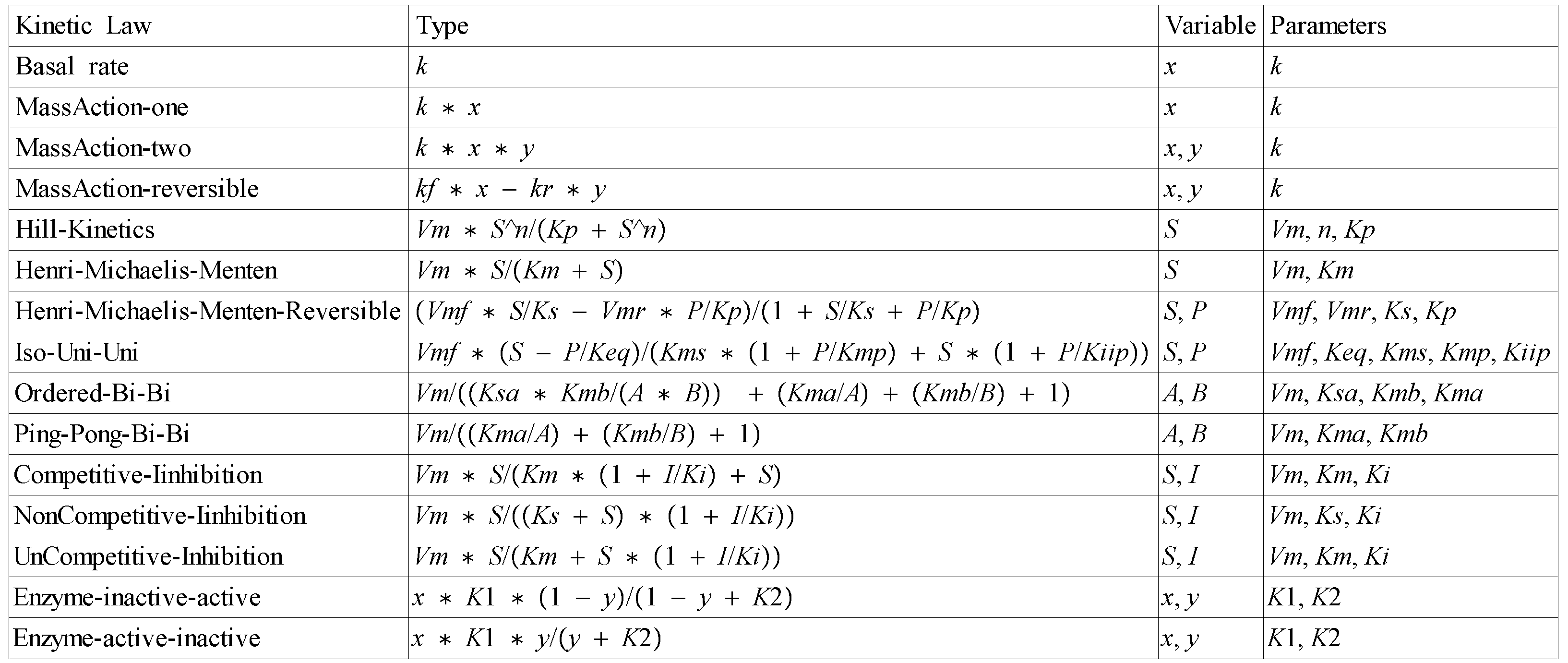 Candidate Kinetic Law Table
|
|
|
 Automatic Biological Circuits Design - Team Logo: wanna know more about the hinding metaphors and inspirations in this little red square? Click to check out how much fun this year's iGEM has brought us!
|
|
 Teaching Affair Office, USTC
Teaching Affair Office, USTC
|
|
 School of Life Sicences, USTC
School of Life Sicences, USTC
|
|

Foreign Affair Office, USTC
|
|

Graduate School, USTC
|
|
 School of Information Science and Technology, USTC
School of Information Science and Technology, USTC
|
|
 School for the Gifted Young, USTC
School for the Gifted Young, USTC
|
|

|
 "
"





















